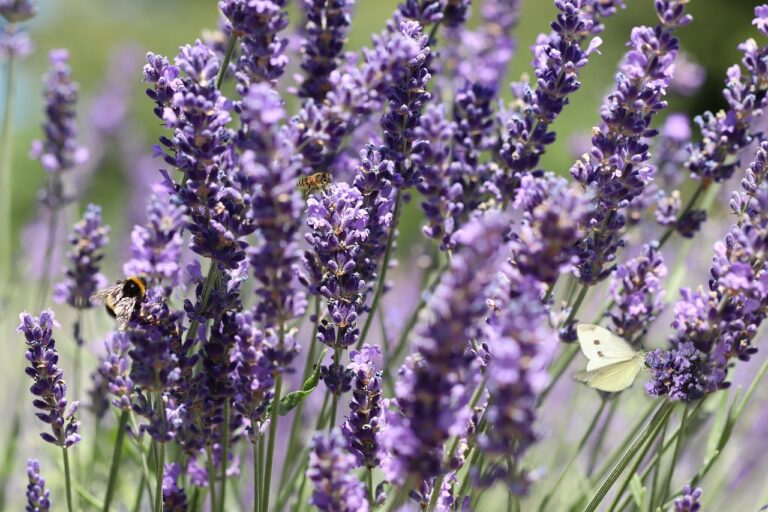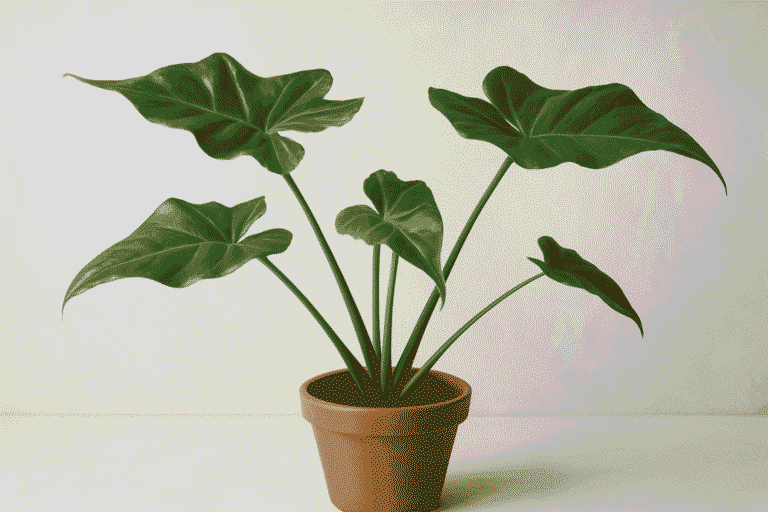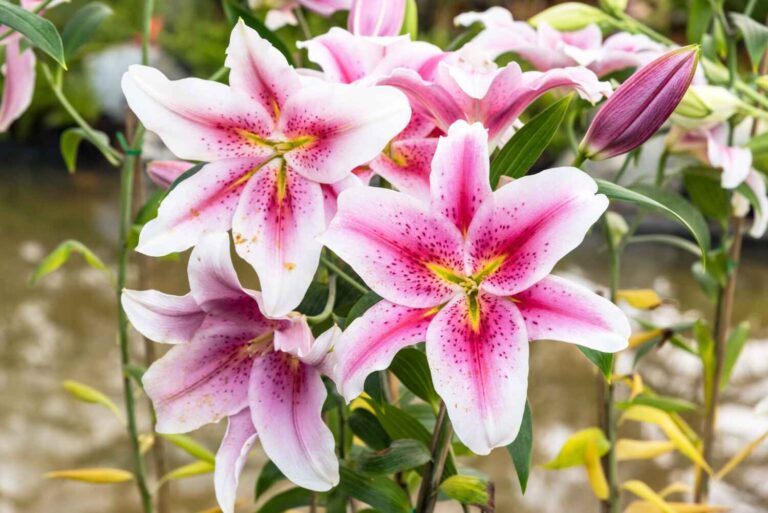Rose of Sharon Bush
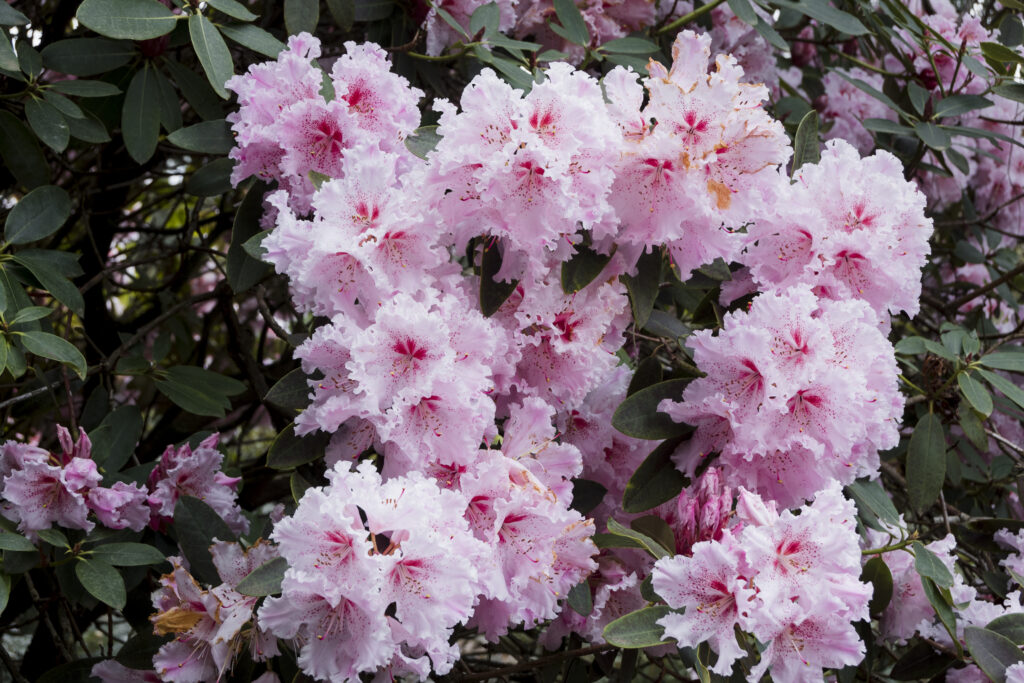
Rose of Sharon bush is an absolutely wonderful addition to a garden as it has brightly blooming flowers, has hardiness and is low in care. A favourite among many worldwide gardeners, this shrub – scientifically known as Hibiscus syriacus – is a very fine deciduous species that stands out for the beautiful appearance of its flowers, flexibility, and ability to stand well against different conditions of its life.
This beautiful shrub produces profusely from mid-summer to early fall, adding eye-catching flowers in shades of pink, white, purple, and blue to any garden. Each flower blooms with its trumpet shape, often featuring a contrasting center, and adds a little tropical touch to your outside space. Beyond its beauty, the Rose of Sharon bush serves as a pollinator attractor for bees, butterflies, and even hummingbirds. That makes it an excellent option for those who want to create vibrant, eco-friendly gardens.
What makes the Rose of Sharon bush stand out is its adaptability. It grows well in full sun or partial shade and tolerates a variety of soil types, as long as the soil is well-drained. This hardy plant is drought-tolerant once established, making it perfect for low-maintenance gardening. It can be used as a privacy hedge, a statement piece in a flower bed, or even as a potted plant for smaller spaces.
In addition to its beauty and versatility, It is low-maintenance. Regular pruning maintains its shape and encourages healthy blooms. It’s also resistant to most pests and diseases, which adds to its appeal as a trouble-free shrub. With its upright growth habit, the bush typically reaches heights of 8 to 12 feet, making it a stunning focal point in any landscape.
In this blog, we will learn everything you should know about the Rose of Sharon bush, including tips on planting, care guidelines, pruning advice, and creative landscaping ideas.
Rose of Sharon Plants
Any garden would love the beauty and drama of the low-maintenance rose of Sharon plant (Hibiscus syriacus). It is one of the deciduous shrubs that is loved by so many gardeners, with a remarkable capacity for thriving in a lot of conditions.
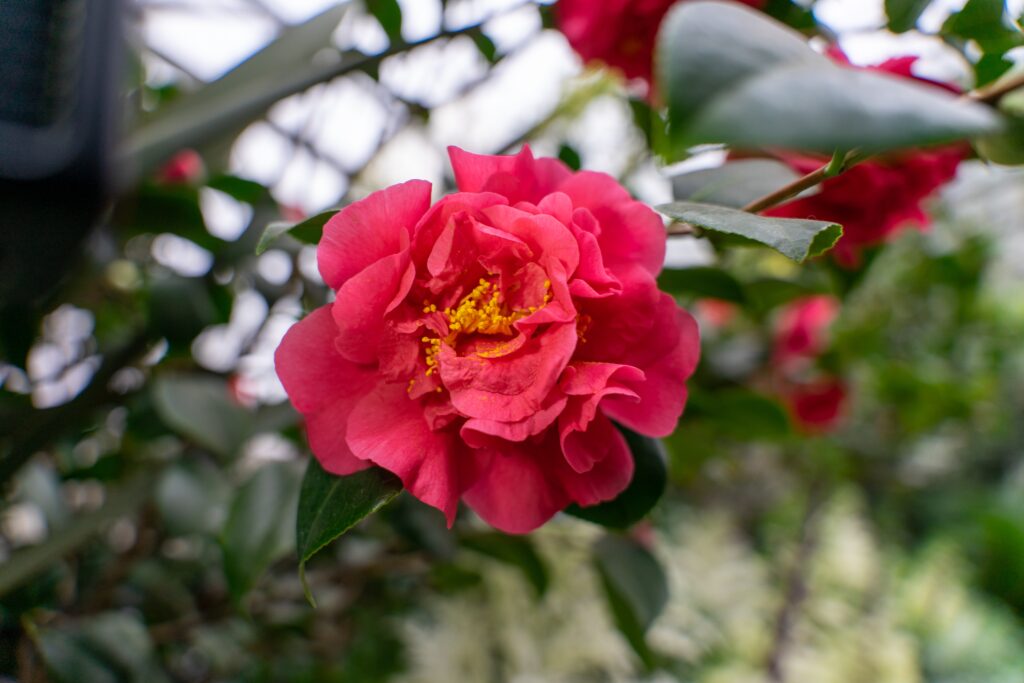
These rose of Sharon plants bloom from midsummer through fall, producing big, trumpet-shaped flowers in pink, white, purple, and blue. Each flower usually has a contrasting center, so they add depth and interest to your garden. They also attract pollinators like bees, butterflies, and hummingbirds, so they are definitely an eco-friendly addition to any outdoor space.
Another positive feature of Rose of Sharon besides the beautiful flowers is how hardy the plant grows in full sun or partial shades with tolerance to different types of soil, provided it doesn’t retain water in a waterlogged condition. Once established, these are drought-tolerant with very little maintenance; an ideal choice for the very busy or for people looking to start out gardening.
Generally, the Rose of Sharon plants grow to be 8 to 12 feet tall, so they can be used for privacy screens, hedges, or even as a focal point in a flower bed. Due to their upright, branching habit, they are very versatile and can fit into a wide range of landscape designs, from small yards to large gardens.
Whether you’re looking to add vibrant color to your garden or create a low-maintenance focal point, Rose of Sharon plants are a reliable and beautiful choice. Their resilience and stunning blooms will provide your garden with year-round beauty and charm.
Rose of Sharon Varieties
Rose of Sharon (Hibiscus syriacus) is a versatile and beautiful shrub that comes in a variety of cultivars, each offering unique colors, sizes, and growth habits. Whether you’re looking for vibrant blooms, compact growth, or unique flower shapes, there’s a Rose of Sharon variety to suit every garden. Here’s a look at some of the most popular Rose of Sharon varieties to consider for your landscape.
Blue Chiffon

Blue Chiffon is a beautiful flower variety with delicate, pale purple flowers. This one has a slightly exotic feel to it because of its ruffled, frilly petals. It blooms from midsummer through fall and grows about 8 feet tall. This is a very popular choice because of the showy flowers and compact growth that is well-suited to smaller gardens or as a mixed border.
Lavender Chiffon
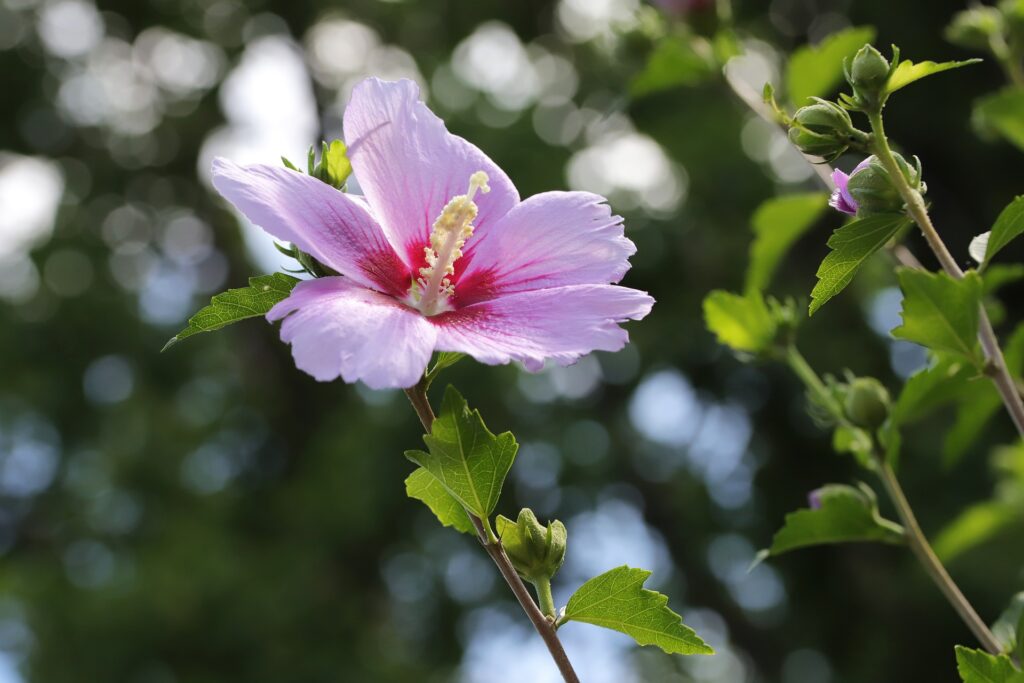
Like the Blue Chiffon, the Lavender Chiffon also has large, ruffled, lavender-pink flowers, and it’s a showstopper in any landscape it is placed. Its height is around 10 feet tall and attracts bee and butterfly pollinators. It is best suited as a backfill shrub or hedging.
Minerva
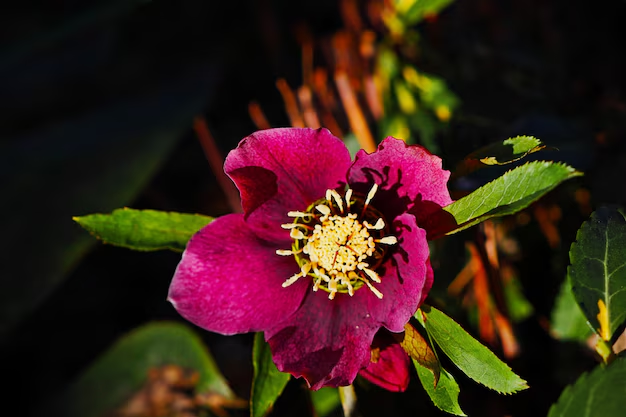
The Minerva variety is quite dramatic-looking due to having bold pink flowers that are dark red at the center. This flower blooms much and can be very robust, overall. Minerva tends to grow around 10 feet tall with an erect growth habit, which will make it the perfect hedge in which to shield the house from the public or become that great eye-catcher for the backyard.
White Chiffon
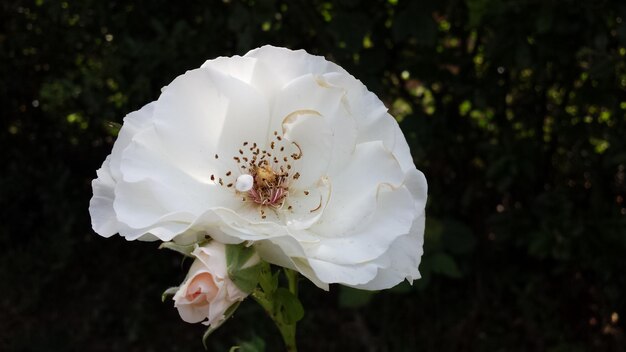
For a more classic look, White Chiffon provides white flowers with a soft appearance and elegant look. The variety has large semi-double blooms that add a sophisticated touch to your garden. It grows to around 8 feet in height and can be used effectively in both small and large garden spaces.
Diana
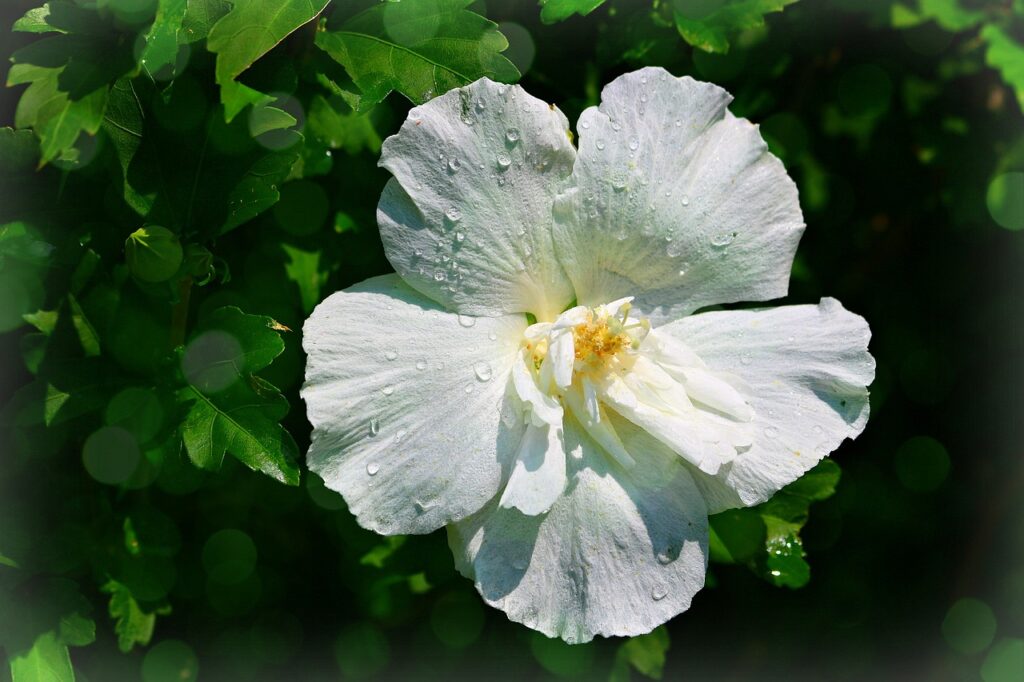
This variety stands alone, with big, clean white flowers having a light pinkish tinge towards the centre. Diana is relatively bushy and can go as tall as 12 feet when mature. It’s excellent for an impact in a bigger garden or as a specimen in a smaller one.
Here are just a few of the many varieties of Rose of Sharon. There is sure to be one that matches your desire for bold, bright colors or soft, pastel shades, and there is one to add beauty and attract pollinators to your garden. Experiment with different varieties to create a dynamic, colorful landscape that blooms from mid-summer into fall.
Rose of Sharon Bush Plant from Seed
Growing a Rose of Sharon bush from seed is very rewarding and cost-effective as a means of propagating the beautiful plant. Although it requires patience, starting your Rose of Sharon bush from seed is a fun project for all gardeners. Here’s how you can successfully grow a Rose of Sharon bush from seed.
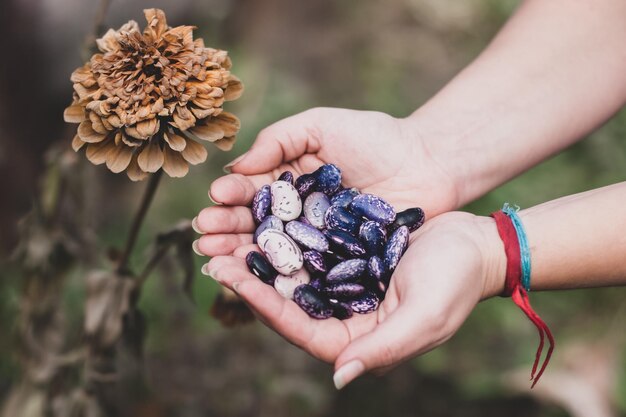
Step 1: Collecting Seeds
Collect seeds from a mature Rose of Sharon bush. The seeds are located within seed pods, which the plant forms after flowering. Wait for the seed pods to brown and start to split. You can now extract the seeds. These seeds are small, flat, and light brown.
Step 2: Stratification
Rose of Sharon seeds require cold stratification to break dormancy. Place the seeds in a plastic bag with some damp sphagnum moss or paper towels and refrigerate them for about 4 to 6 weeks. This simulates winter conditions and encourages the seeds to germinate.
Step 3: Planting the Seeds
Now that the seeds are stratified, it’s time to sow them. Fill small pots or seed trays with a well-draining potting mix and scatter the seeds on the surface. Lightly press the seeds into the soil but do not bury them. Place the pots under a clear plastic lid or plastic wrap to maintain humidity.
Step 4: Germination and Care
Place the pots in a warm, sunny location. Rose of Sharon seeds usually germinate within 2 to 4 weeks. Keep the soil moist but not waterlogged. When the seedlings are large enough to handle, transplant them into larger pots or directly into your garden.
Growing a Rose of Sharon from seed is a little slow, but the reward will be well worth the effort. With a little care, you will have a thriving, beautiful shrub that will brighten your garden for years to come.
When to Prune Rose of Sharon?
Knowing when to prune Rose of Sharon is crucial to keeping this beautiful shrub healthy and blooming at its best. The best time to prune Rose of Sharon, Hibiscus syriacus, is during late winter or early spring before new growth begins. It is the dormant period, so it’s best to trim the plant without interfering with its cycle of blooming.
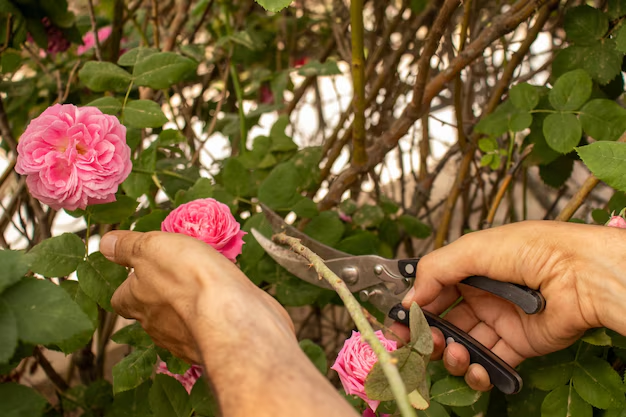
Pruning Rose of Sharon at the right time will ensure you a sensational display of flowers in the summer and fall. The shrub blooms on new wood; this means flowers develop on the branches that are growing within the current season. Consequently, by pruning before the start of the growing season, you are urging fresh growth and, accordingly, many blooms later in the year.
Remove any dead, damaged, or crossing branches for improving the shrub’s structure and air circulation. You can cut back branches of an oversized plant by up to one-third of their length, and it will be of the same shape and size. Cut some of the oldest stems near the base of older shrubs, which encourages vigorous new growth.
Prune Rose of Sharon during the right seasons, but avoid pruning in late summer or fall because the cuts may delay the flower bloom cycle and expose the shrub to winter damages. With these best times, it will surely be healthy and florid prime for years.
With proper timing and technique, pruning Rose of Sharon is a simple task that can make its beauty shine and stimulate healthier growth.
How to Propagate Rose of Sharon Bush?
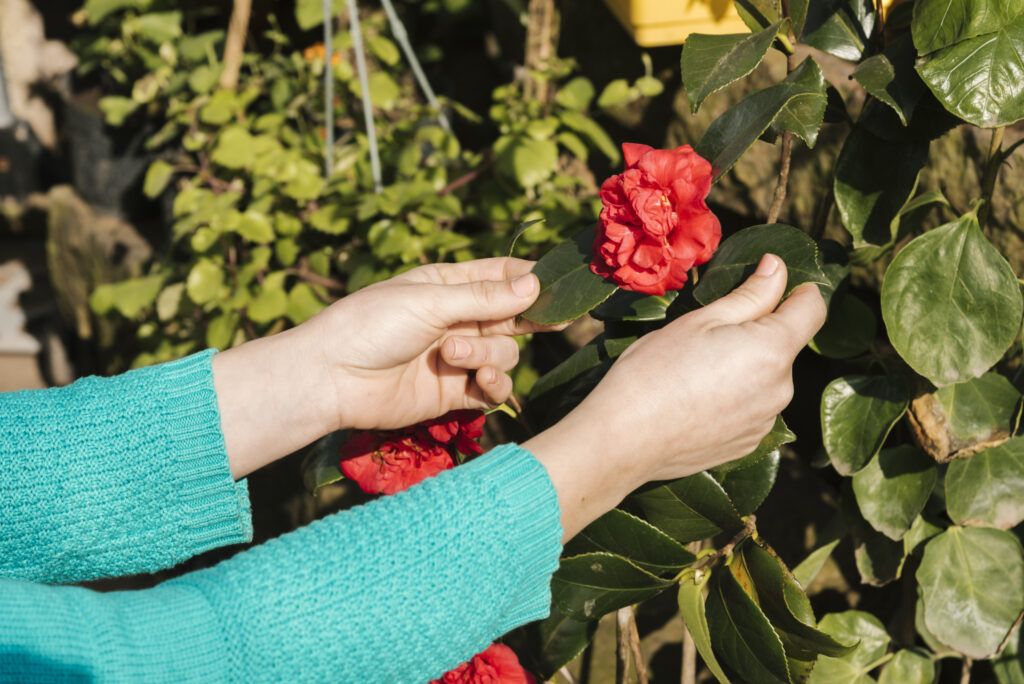
Propagation of a Rose of Sharon bush is one of the most rewarding and easiest ways for you to grow more such beautiful shrubs for your garden. The most preferred method for propagation is using cuttings, through which it is possible to obtain new plants that possess the same lovely characteristics of the parent bush.
To propagate a Rose of Sharon bush, take cuttings in late spring or early summer when the plant is actively growing. Choose healthy, non-flowering branches and cut a 4- to 6-inch section just below a leaf node. Remove the lower leaves, leaving only a few at the top.
Dip the cut end of the stem in rooting hormone to encourage faster root growth. Then, plant the cutting in a pot filled with moist, well-draining potting mix. Cover the pot with a plastic bag or clear container to create a greenhouse effect and place it in indirect sunlight.
Water the soil moist but not waterlogged. It should take 6-8 weeks for the development of roots, and it’s then ready to transplant the cutting into your garden.
With these easy steps, you can propagate your Rose of Sharon bushes, creating a beautiful bloom in your garden in many areas.
How to Trim a Rose of Sharon?
Pruning a Rose of Sharon (Hibiscus syriacus) is one of the major care activities to maintain the shape, blooms, and health of the plant. This very vigorous shrub can get too large if not controlled, so periodic pruning keeps it at a size that is manageable and healthy. Here is how to prune your Rose of Sharon for its best growth and appearance.

Step 1: When to Trim
Late winter or early spring is the best time to prune a Rose of Sharon, before new growth begins. Pruning shrubs during the dormant season to scaffold and remove dead and damaged branches does not interrupt bud development or the flowering cycle. Since rose of Sharon flowers on new growth, pruning in early spring encourages more vigorous blooming later in the season.
Step 2: Materials Needed
Before you begin trimming, you will need the right tools: sharp pruning shears for small branches and loppers for thicker stems. Disinfect and clean tools to prevent disease spread before using.
Step 3: Remove Dead or Damaged Wood
Prune out dead, diseased, or damaged limbs first. This not only enhances the appearance of the plant but also prevents the spread of pests and disease. Reduce these to healthy wood or down to the base of the shrub.
Step 4: Prune into the Desired Shape
Prune after you have removed all the dead wood, and then Rose of Sharon can be pruned to your desired shape. Prune any very long branches or shoots that sprout where they’re not wanted to keep your plant in nice shape. If the shrub is too large or leggy, you can reduce the size by up to a third. If you plan to prune, do not remove too much of it because this may stress your plant.
Step 5: Air Circulation
Thin overcrowded regions to enhance air flow, light penetration, which could prevent disease and support the natural growth of the shrub. Trim a Rose of Sharon
It is easy and in the best interest of health and appearance to trim your shrub. Get the timing right, as well as proper care to keep your shrub going on all these years with spectacular displays of flowers.
Frequently Asked Questions
Yes, Rose of Sharon (Hibiscus syriacus) is a type of hibiscus.
Rose of Sharon bushes can be killed by overwatering, pests, diseases, extreme drought, or severe cold.
Prune Rose of Sharon in late winter or early spring before new growth begins.
Trim Rose of Sharon in late winter or early spring before it starts active growth.
Propagate Rose of Sharon by rooting softwood cuttings in late spring or early summer with rooting hormone and moist soil.
Table of Contents
- Rose of Sharon Bush
- Rose of Sharon Plants
- Rose of Sharon Varieties
- Blue Chiffon
- Lavender Chiffon
- Minerva
- White Chiffon
- Diana
- Rose of Sharon Bush Plant from Seed
- When to Prune Rose of Sharon?
- How to Propagate Rose of Sharon Bush?
- How to Trim a Rose of Sharon?
- Mona Lavender Plant: Complete Growing Guide for Beginners
- Alocasia Stingray Plant Guide: Tips for Healthy Growth
- Pink Lilly Flower: Growing and Caring for Pink Lillies

